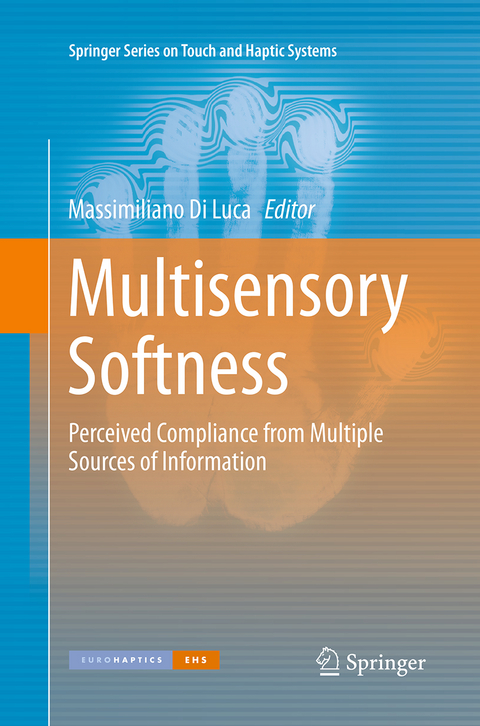
Multisensory Softness
Perceived Compliance from Multiple Sources of Information
Seiten
2016
|
Softcover reprint of the original 1st ed. 2014
Springer London Ltd (Verlag)
978-1-4471-7061-7 (ISBN)
Springer London Ltd (Verlag)
978-1-4471-7061-7 (ISBN)
Offers a unique multidisciplinary overview of how humans interact with soft objects and how multiple sensory signals are used to perceive material properties, with an emphasis on object deformability. The authors describe a range of setups that have been employed to study and exploit sensory signals involved in interactions with compliant objects as well as techniques to simulate and modulate softness – including a psychophysical perspective of the field.
Multisensory Softness focuses on the cognitive mechanisms underlying the use of multiple sources of information in softness perception. Divided into three sections, the first Perceptual Softness deals with the sensory components and computational requirements of softness perception, the second Sensorimotor Softness looks at the motor components of the interaction with soft objects and the final part Artificial Softness focuses on the identification of exploitable guidelines to help replicate softness in artificial environments.
Multisensory Softness focuses on the cognitive mechanisms underlying the use of multiple sources of information in softness perception. Divided into three sections, the first Perceptual Softness deals with the sensory components and computational requirements of softness perception, the second Sensorimotor Softness looks at the motor components of the interaction with soft objects and the final part Artificial Softness focuses on the identification of exploitable guidelines to help replicate softness in artificial environments.
Introduction.- Section 1: Perceptual Softness.- Physical Aspects of Softness Perception.- Visual-Haptic Softness.- Vibrotactile Sensation and Softness Perception.- Auditory Perception of Material Properties.- Computational Aspects of Softness Perception.- Section 2: Sensorimotor Softness.- Exploratory Movement Strategies in Softness Perception.- The Perception of the Centre of Elastic Force Fields: A Model of Integration of the Force and Position Signals.- Dynamic Combination of Movement and Force for Softness Perception.- Perception of Stiffness with Delay.- Section 3: Artificial Softness.- Natural and Artificial Motion Feedback in Compliance Perception.- Softness Displays.- Haptic Augmentation in Soft Tissue Interaction.
| Erscheinungsdatum | 23.09.2016 |
|---|---|
| Reihe/Serie | Springer Series on Touch and Haptic Systems |
| Zusatzinfo | 80 Illustrations, black and white; XIII, 257 p. 80 illus. |
| Verlagsort | England |
| Sprache | englisch |
| Maße | 155 x 235 mm |
| Themenwelt | Mathematik / Informatik ► Informatik ► Betriebssysteme / Server |
| Informatik ► Grafik / Design ► Digitale Bildverarbeitung | |
| Informatik ► Software Entwicklung ► User Interfaces (HCI) | |
| Mathematik / Informatik ► Informatik ► Theorie / Studium | |
| Naturwissenschaften ► Biologie ► Zoologie | |
| Technik ► Elektrotechnik / Energietechnik | |
| Schlagworte | Haptic design • Multisensory Perception • Multisensory Softness • Softness Perception |
| ISBN-10 | 1-4471-7061-X / 144717061X |
| ISBN-13 | 978-1-4471-7061-7 / 9781447170617 |
| Zustand | Neuware |
| Haben Sie eine Frage zum Produkt? |
Mehr entdecken
aus dem Bereich
aus dem Bereich
Modelle für 3D-Druck und CNC entwerfen
Buch | Softcover (2022)
dpunkt (Verlag)
CHF 48,85
alles zum Drucken, Scannen, Modellieren
Buch | Softcover (2024)
Markt + Technik Verlag
CHF 34,90


